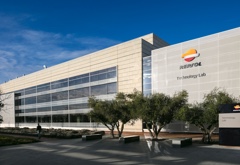
What is a wind turbine?
The key to wind energy
Learn all about the "passivhaus"
The efficiency and comfort revolution
Did you know that there are buildings and homes that require 75% less heating and cooling due simply to their construction design?
These are the passivhaus or 'passive houses', which use mechanical ventilation systems to recover heat, perfect thermal insulation, correct orientation, and eliminate heat or cooling leaks, among other standards that must be met to earn the Passivhaus certification.
Passive houses not only favor lower energy consumption, with the economic savings and lower carbon footprint that this implies, but also, according to various studies, are healthier for those who inhabit them. Thanks to the renewal of air, the more sustainable materials used, and the search for natural light, they help prevent diseases. We explain the characteristics of passivhaus houses and the advantages that have made them popular in recent years.


What is a "passivhaus" or a passive house?
The defining characteristic of passivhaus houses is their maximum energy efficiency and minimum energy requirement for heating and cooling. This construction system employs bioclimatic architecture techniques so that these homes generate a comfortable temperature practically on their own at any time of the year.
Passive houses have recently become a trend in the field of construction, due to their efficiency and commitment to sustainability. The concept was coined in 1988 by professors Bo Adamson, of Lund University in Sweden, and Wolfgang Feist, of the Institute for Building and Environment in Germany, which resulted in standards that the Passivhaus Institut checks in order to issue passivhaus certification.
These characteristics, which make them passivhaus, make it possible to reduce energy consumption in these homes by around 75% compared to homes built using conventional construction techniques.
Characteristics of passive houses
The Institut für Baubiologie und Okologie (Institute for Building Biology and Ecology) in Bavaria - in charge of all aspects related to bioconstruction - establishes a total of 25 guidelines for bioconstruction that serve as indicators and define the basic characteristics of this discipline, which, broadly speaking, can be summarized as follows:
Our energy plans
Discover Repsol's energy plans for your home and choose the one that best suits you.
Benefits of the passivhaus
For all these reasons, passive houses have a series of advantages that conventional houses do not have:
Repsol and energy efficiency

If along with the above standards we add the use of renewable energies to the passive house, we further reduce the carbon footprint. In this sense, the installation of photovoltaic panels is an alternative that fits this type of design. Solar panels allow us to make use of renewable energies at home, thus contributing to the reduction of emissions and saving on consumption and electricity bills.
At Repsol, we promote the use of renewable energies, as part of our commitment to be the first multi-energy company to achieve net zero emissions by 2050. We also make it easier to control consumption in the home, for example, thanks to Vivit, the app that allows you to control the energy expenditure of each appliance, your bills, or save by accumulating surplus solar energy, among other advantages.